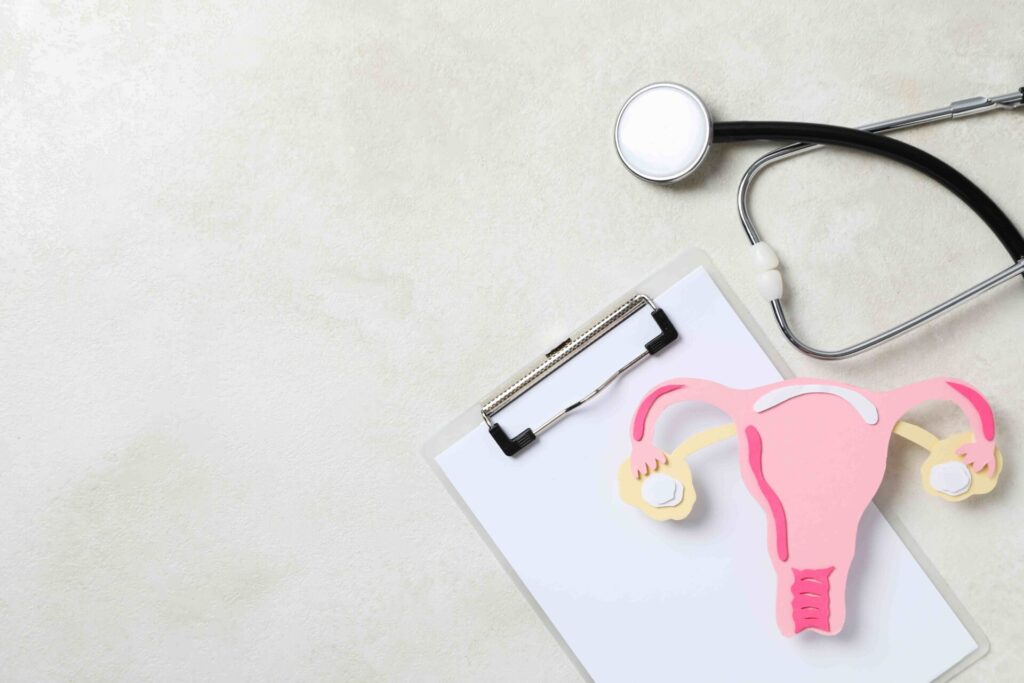Adenomyosis is a common but often misunderstood gynaecological condition affecting women, particularly in their 30s and 40s. While many women experience heavy periods or pelvic pain, they may not realize that adenomyosis could be the root cause. In this comprehensive guide, we’ll break down what adenomyosis is, explore its causes, recognize its symptoms, and highlight the effective treatment options available today.
What Is Adenomyosis?
Adenomyosis is a condition in which the endometrial tissue, typically lining the uterus, grows into the muscular wall of the uterus. This abnormal growth causes the uterus to become enlarged and can lead to severe menstrual cramps, heavy bleeding, and chronic pelvic pain.
Though non-cancerous, adenomyosis can significantly affect a woman’s quality of life, leading to discomfort, fertility challenges, and emotional distress if left untreated.
Causes of Adenomyosis
The exact cause of adenomyosis is still unknown, but experts believe several factors might contribute to its development:
1. Hormonal Imbalance
- Estrogen, the female sex hormone, is thought to play an important role.
- High levels of estrogen may stimulate endometrial tissue to invade the uterine muscle.
2. Uterine Inflammation
- Inflammation during childbirth, cesarean delivery, or uterine surgery may allow endometrial cells to penetrate deeper into the uterine wall.
3. Developmental Origins
- Some experts believe adenomyosis may originate during fetal development when the uterus is forming.

4. Tissue Trauma
- Past uterine procedures, such as D&C (dilation and curettage) or fibroid removal, may disrupt the barrier between the endometrium and the uterine muscle.
5. Genetics
- Women with a family history of adenomyosis may be more likely to develop the condition.
Symptoms of Adenomyosis
The symptoms of adenomyosis can vary in severity and often mimic other gynaecological disorders like endometriosis or fibroids. Here are the most common signs to watch for:
Heavy or Prolonged Menstrual Bleeding
Women with adenomyosis often report menorrhagia or excessive menstrual bleeding, which can lead to anaemia and fatigue.
Severe Menstrual Cramps
Intense and debilitating pelvic pain during menstruation is one of the hallmark symptoms.
Chronic Pelvic Pain
Some women experience persistent pelvic discomfort even outside of their periods.
Pain During Intercourse (Dyspareunia)
Pain during or after sex is a common complaint, impacting both physical and emotional intimacy.
Bloating and Pressure
A feeling of fullness or pressure in the lower abdomen due to an enlarged uterus.
Infertility or Difficulty Conceiving
Although not all women with adenomyosis are infertile, the condition can interfere with implantation and embryo development.
Who Is at Risk for Adenomyosis?
Certain factors may increase your risk of developing adenomyosis:
- Women aged 30–50 years.
- Previous childbirth
- Uterine surgeries like C-sections or fibroid removal
- High estrogen levels
- History of endometriosis or uterine infections
Understanding these risk factors can help in early diagnosis and treatment.

Diagnosing Adenomyosis
Diagnosing adenomyosis can be challenging because symptoms overlap with other conditions. However, doctors use several tools and tests to confirm the diagnosis:
Pelvic Exam
Your doctor may detect an enlarged, tender uterus during a routine examination.
Imaging Tests
- Ultrasound helps identify uterine wall thickening or irregularities.
- MRI (Magnetic Resonance Imaging) provides more detailed views of the uterine tissue layers.
Endometrial Biopsy
While not commonly used to diagnose adenomyosis directly, it can help rule out other conditions like cancer.
Treatment Options for Adenomyosis
The treatment for adenomyosis depends on the severity of symptoms, the patient’s age and whether she wants to preserve fertility. Here are the most effective options:
1. Medications
- Hormonal therapy: Birth control pills, IUDs (like Mirena) or GnRH agonists help regulate or stop periods.
- NSAIDs: Nonsteroidal anti-inflammatory drugs like ibuprofen can ease cramps and reduce bleeding.
2. Minimally Invasive Procedures
- Endometrial ablation: Destroys the uterine lining to reduce bleeding (not suitable if future pregnancy is desired).
- Uterine artery embolization (UAE): Blocks blood flow to the affected areas, causing the tissue to shrink.
3. Surgical Treatments
- Hysterectomy: Complete removal of the uterus is the only definitive cure for adenomyosis.
- Conservative surgery: In rare cases, targeted removal of adenomyotic tissue can preserve the uterus.
Adenomyosis and Fertility: What You Need to Know
Many women with adenomyosis are concerned about their ability to conceive. While the condition doesn’t always cause infertility, it can:
- Disrupt embryo implantation
- Cause early miscarriages
- Interfere with ovulation
If you’re trying to get pregnant, working closely with a fertility specialist is key. Treatments like IVF (in vitro fertilization) may offer hope, especially when combined with hormonal therapy to manage symptoms.
Living with Adenomyosis: Lifestyle and Support
Treating adenomyosis isn’t only about medicines — making changes to your daily habits can also help you feel better and live more comfortably:
Self-Care Tips
- Apply heating pads for relief from pelvic pain.
- Practice gentle yoga or stretching.
- Maintain a healthy diet rich in iron and foods that are anti-inflammatory.
Emotional Support
- Join online or local support groups.
- Talk to a mental health professional if adenomyosis is affecting how you feel emotionally or causing stress.
- Be open with your partner or family about how you’re feeling
Conclusion
Adenomyosis is a challenging condition, but it’s also manageable. Early diagnosis and personalized treatment plans can significantly improve symptoms and quality of life. If you suspect you may have adenomyosis, don’t ignore the signs—consult a gynaecologist for proper evaluation and care.At our clinic, we offer advanced diagnosis, compassionate care and individualized treatment plans for women suffering from adenomyosis and other reproductive health issues


